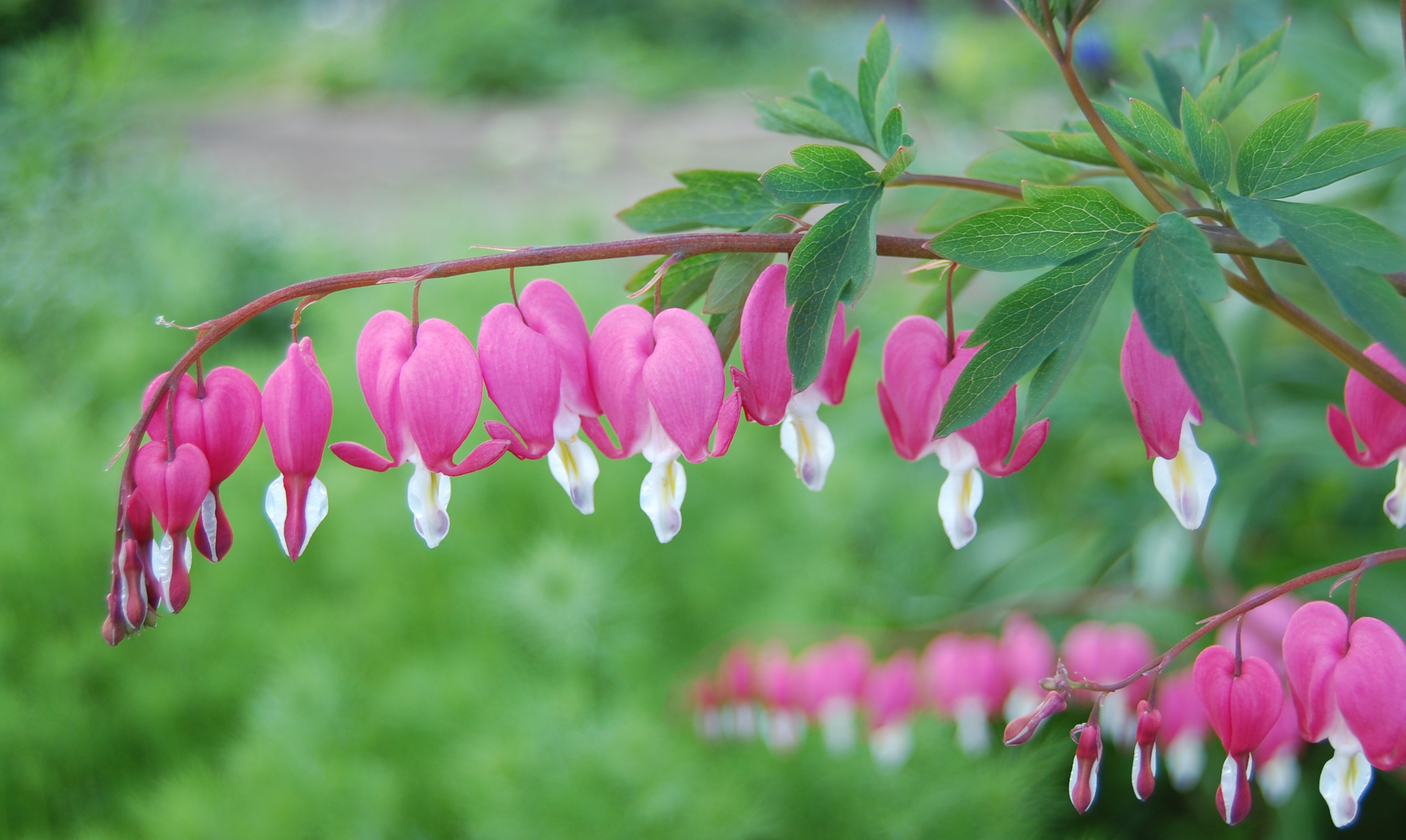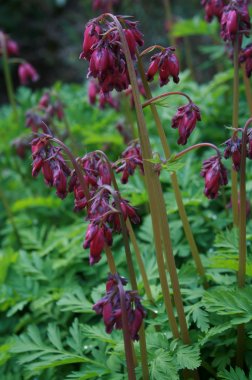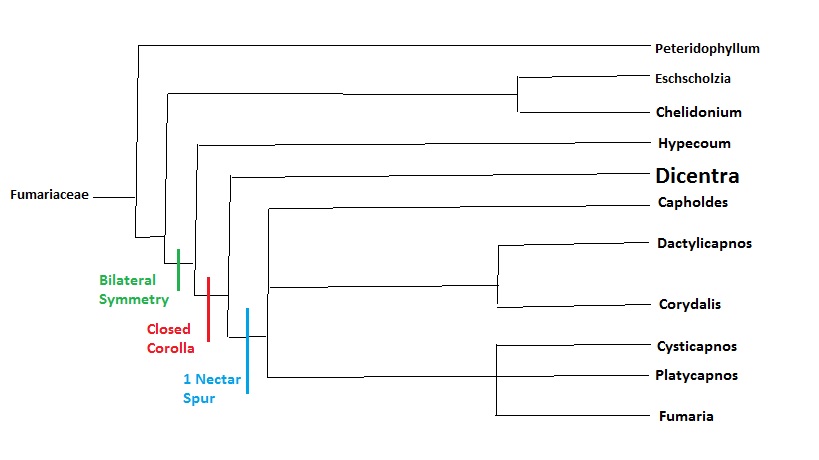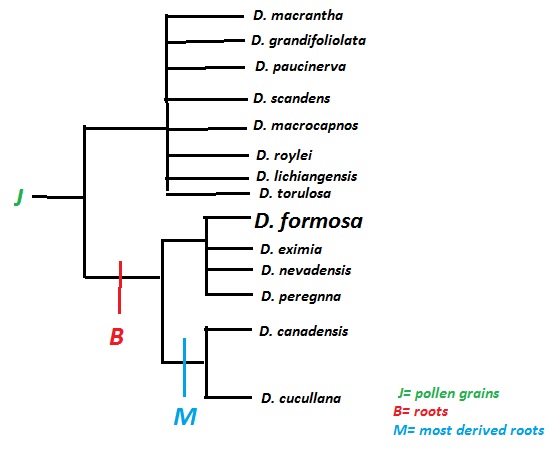Classification
Dicentra is Greek for "double spurred," and formosa is comes from the Latin word formosus meaning "beautiful."

Domain: Eurkarya
Super group: Archaeplastida
Kingdom: Virdiplante
Subkingdom:
Tracheobionta
Phylum:
Magnoliophyta
Class: Magnoliopsida
Order: Papaverales
Family: Fumariaceae
Genus: Dicentra
Species: Dicentra formosa (Pacific
Bleeding Heart)
Domain: Eurkarya
Organisms a part of this domain have characteristics
that include true nuclei and membrane bound
organelles. Majority of the organisms in this domain
are multi-cellular. In particular to plants, the
organisms have cell walls made up of cellulose. An
example of an organism in this domain is
Cymbopogon citratus ("lemongrass").
Supergroup: Archaeplastida
Organisms in super group Archaeplastida underwent endosymbiosis with a cyanobacteria millions of years
ago. Now these organisms can photosynthesize. An
example of an organism in this supergroup is
green algae (Spriogyra longata).

Kingdom: Virdiplante
Organisms in kingdom Virdiplante are all the land
plants plus green algae. These organisms have
pigments chlorophyll a, chlorophyll b,
and caroteniods which give them a green color. Examples
of organisms that are a part of this kingdom are
Juniperus communis, otherwise known as
Juniper, and
Tea plants (Camellia sinensis).
Subkingdom: Tracheobionta
Organisms in subkingdom Tracheobionta are
known as the "vascular plants." These organisms have
vascular tissue, xylem and phloem, as conducting
tissues. Xylem tissue is responsible for the upward
conduction of water. Phloem is responsible for the
conduction of sugars and nutrients. An example of an organism in
this subkingdom is
Poison Ivy (Toxicodendron radicans). To
learn more about the subkingdom Tracheobionta, click
here.
Phylum: Magnoliophyta
Organisms in phylum Magnoliophyta have flowers
and/or fruits that protect their seeds. Examples of organisms
in this phylum are
Purple Passion Flower (Passiflora incarnata)
and
Mistletoe (Phoradendron leucarpum).
 Class: Magnoliopsida
Class: Magnoliopsida
Organisms in class Magnoliopsida have a more common
name called the "dicots." Dicots have two cotyledons
or "embryonic leaves" that form inside the seed and
become the first two leaves of the plant. Dicot
leaves have net pattern veins. Example of organisms
in this class are
Passion Fruit (Passiflora edulis)
and
Kiwifruit (Actinidia deliciosa).
Order: Papaveralas
Organisms in order Papaveralas are marked by their
syncarpous gynoecium (multiple carpels fused
together), parietal placentation (placentas in ovary
wall), and only two sepals. An example of an
organism in this order is
Opium Poppy (Papaver somniferum).
Family: Fumariaceae
Organisms in family Fumariaceae are
primarily distinguished by their zygomorphic flowers
and their watery juice that it produces.
Genus: Dicentra
Organisms in genus Dicentra are acaulescent,
which means they have no apparent stem or trunk
above-ground. Also, species in genus Dicentra are
poisonous.
Species: Dicentra
formosa
Also know as the "Pacific Bleeding
Heart," this species is primarily known for its
location on the West Coast of the United States
Dicentra formosa Phylogeny:
In the phylogeny above, it arranges the organisms of the family Fumariaceae by morphology. For genus Dicentra, it has the derived characteristics of bilateral symmetry and closed corolla. The significance of bilateral symmetry in plants and their flowers is the higher fitness and more pollinators, measured by number of seeds produced and number of seeds surviving the juvenile stage (Gomez, 2006). Closed corolla is the fused petals of the flower.
In the phylogeny above, it breaks down the species of Dicentra by evolution of pollen grains and roots. The pollen grains of Dicentra are 6-rugate. The roots of Dicentra have plants that are rhizomatous. The rhizome is a specialization (Stern, 14).
Continue to Habitat of the
Pacific Bleeding Heart
Return to Homepage
\

